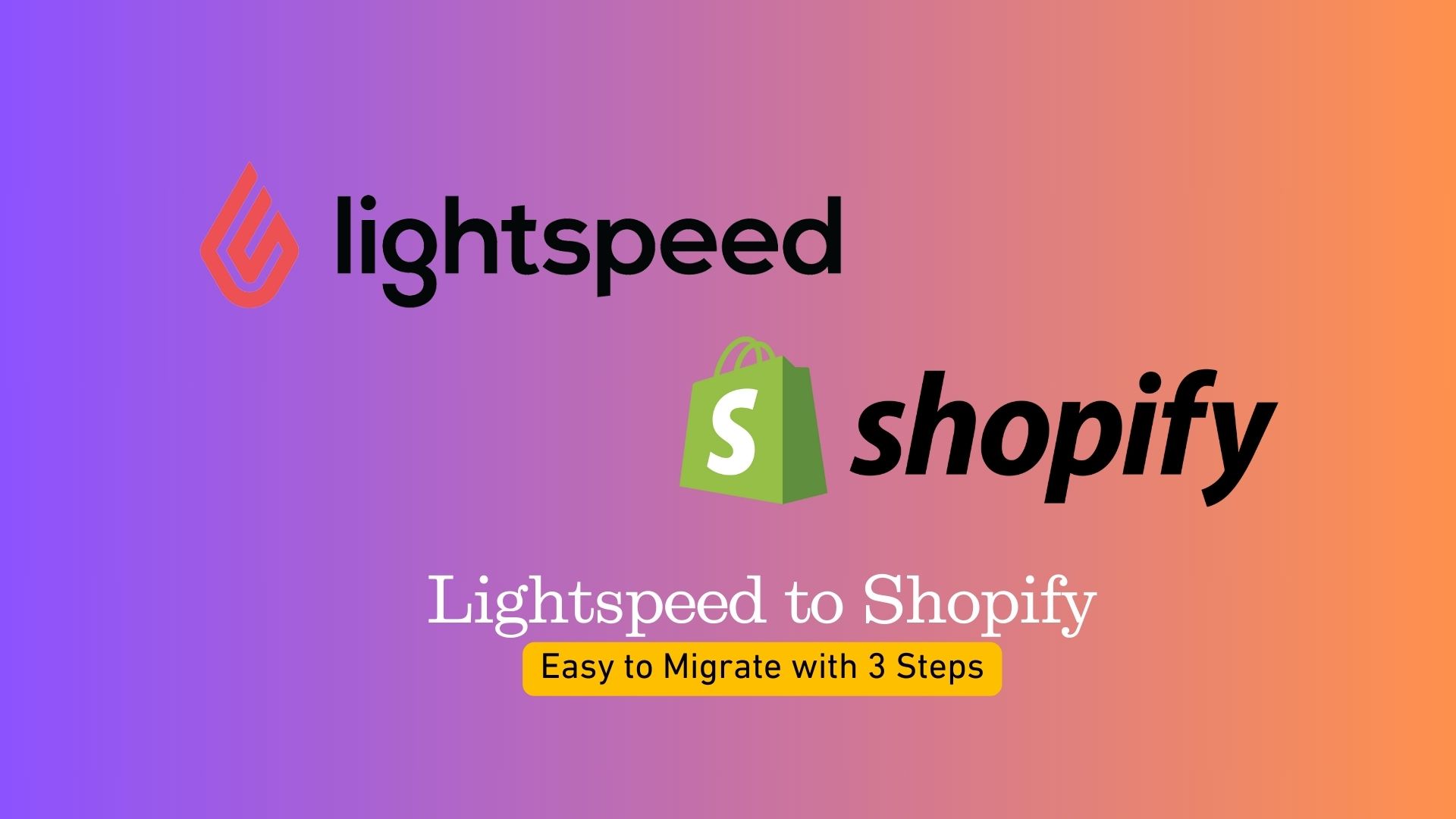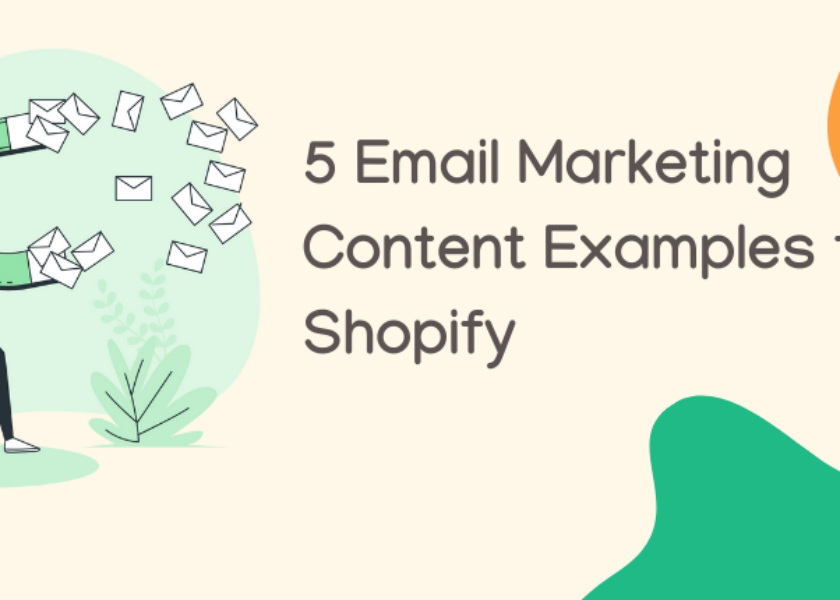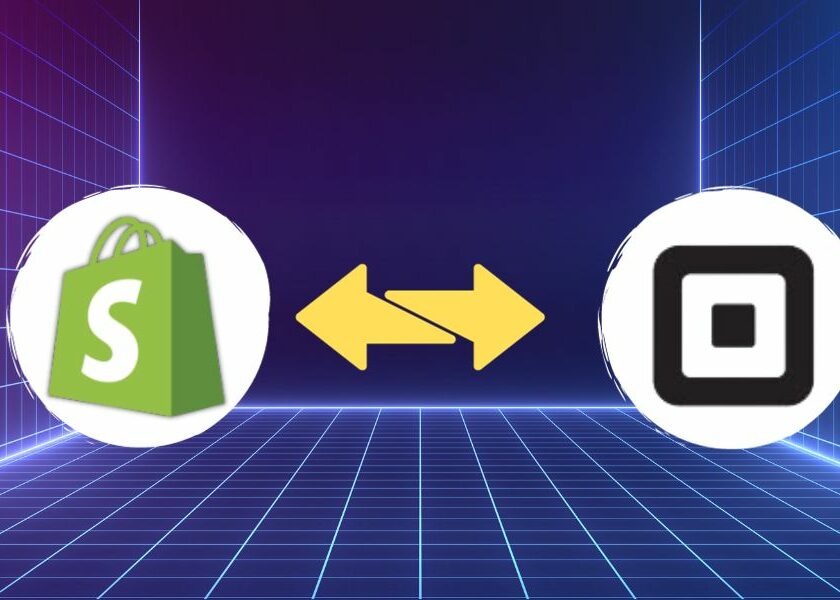Lightspeed to Shopify Migration: The Detailed Instruction 2024

Switching from Lightspeed to Shopify can greatly enhance the performance, design, and scalability of your online store. However, it is crucial to carefully evaluate the costs, benefits, and best practices associated with the migration process.
In this comprehensive guide, BSS Commerce Shopify will provide you with detailed guides on how to effectively migrate Lightspeed to Shopify. At the same time, this blog will discuss the various types of data that can be migrated, outline the necessary steps to undertake, and introduce you to crucial factors you need to consider before migrating Lightspeed and Shopify.
Contents
- Lightspeed vs Shopify – At a Glance
- Types of Data Needed to Transfer From Lightspeed to Shopify
- Lightspeed to Shopify Migration: Step-by-Step Guides
- Why Should You Migrate Lightspeed to Shopify?
- Lightspeed to Shopify Migration – The Final Verdict
- FAQs about Lightspeed to Shopify
Lightspeed vs Shopify – At a Glance
Below is a brief explanation of both popular platforms, Lightspeed and Shopify, that you shouldn’t ignore before migrating Lightspeed to Shopify.
What is Lightspeed?
Lightspeed is the leading point of sale and payments platform that empowers top-notch retail and hospitality establishments across approximately 168,000 venues worldwide. At present, Lightspeed offers four primary product categories, namely retail, restaurant, golf, and eCommerce Lightspeed.

What is Shopify?

Shopify, which has established itself as a giant, is a leading player in the eCommerce platform industry. Initially created in 2006 to cater to the online sale of snowboarding gear, it has since evolved into a comprehensive and versatile platform that serves online retailers of various sizes and industries.
With its extensive range of eCommerce functionalities and user-friendly interface, Shopify has garnered the trust of more than millions of merchants worldwide, and more than 170 countries are represented for website development.
Comparison of Lightspeed and Shopify
In order to assist you in making an informed decision when selecting a platform for your online business, we have gathered a comprehensive list of advantages and disadvantages for both Lightspeed and Shopify. Thanks to comparing these two popular platforms, you will be able to make the optimal choice that suits your needs:
| Comparison | Shopify | Lightspeed |
| Rating | 4.5/5 | 4.1/5 |
| Pros |
|
|
| Cons |
|
|
Types of Data Needed to Transfer From Lightspeed to Shopify
- Product: Lightspeed provides customers with the freedom to choose from a wide range of variants and custom options for their products. On the other hand, Shopify mainly focuses on supporting variants and allows for custom options by utilizing combinations, although there are certain restrictions on the number of options and variants that can be accommodated.
- Product Categories: Lightspeed offers a comprehensive system for organizing product categories in a hierarchical manner. On the other hand, Shopify does not provide support for hierarchical categories, but it compensates by allowing the creation of brilliant types based on product attributes.
- Customers: Both platforms place a high priority on customer data and necessitate valid email addresses and physical addresses for customer accounts, thereby bolstering security.
- Orders: For orders in Lightspeed, a single state denotes both payment and dispatch. Shopify differs between statuses related to payments and fulfillment, where fulfillment does not always entail shipment.
- Blogs: Both Lightspeed and Shopify provide blogging capabilities in addition to their online store features. Shopify offers a comprehensive blog page creation dashboard that is packed with useful features. However, it is important to keep in mind that the compatibility of blog posts with Shopify may be affected by third-party website design modules.
- Others (Product Reviews, Manufacturers and more): The inclusion of product reviews, manufacturers, and other features is supported by both Lightspeed and Shopify. Interestingly, the structure of these supplementary data types is quite similar across both platforms. By restructuring the content in this manner, the original information is preserved while also making it easier to reference and comprehend.
Lightspeed to Shopify Migration: Step-by-Step Guides
There are two ways to migrate Lightspeed to Shopify, including manually and using an application. Below are the detailed guides about these two ways.
Lightspeed to Shopify Pre-migration
Back Up Your Data
To manually backup your Lightspeed data on your Onsite server, please follow these straightforward instructions:
1. Access the OnSite Dashboard and navigate to Tools > Utilities > Backup Database.
2. Select the option “Backup” and patiently wait for a few minutes.
3. Your store data is now securely backed up.
Building a Shopify Store
Shopify gives new users the option to continue their preparation for just $1 per month for the first three months after taking advantage of a three-day free trial.
To set up a store on Shopify:
1. Make sure to register for a new account on their website.
2. To share more details about your business, respond to a few questions; alternatively, choose “Skip All” to move on.
Way 1: Migrating Lightspeed to Shopify Manually
Step 1. Export all Data from Lightspeed
1. You will need to go into your Lightspeed Admin: https://ecom.lightspeed.app/. In the left-side bar, choose the “Catalog” menu and click the “Product” button.
2. In this step, you can choose any products in the catalog that you want to export. If you want to export all data from LightSpeed, please click the “Products Selected” button.

3. Next, click on the “Export” button within the pop-up window to initiate the export process. Once the export is finished, click on the “Download” button to retrieve the file.

Step 2. Import the File to Shopify
1. The next step is to import the file to Shopify. You need to make sure that the file is downloaded from LightSpeed in CSV format to match the format of Shopify.

2. After choosing the CSV file, you can click the “Upload and Preview” button.

3. Once you have confirmed your migration configuration, the migration process will commence. At this stage, all that is required of you is to patiently wait!
The duration of the migration will vary depending on the volume of data present on your Lightspeed site, which can span from a few minutes to several hours. Once the migration is completed, you will be notified with a “Congratulations” message, affirming the successful transfer of your data to Shopify.
Step 3. Check and Review the Data
The final step is to check and review the data you are exporting from the Lightspeed site and importing to the Shopify store. Some sections you need to focus on include catalog, products, size, pricing, and detailed information about products.
In the event that migrating any elements from Lightspeed to Shopify fails, you can easily customize the information in the Shopify store manually.
Way 2. Using Store Migration App
There are many apps in the market that help you with Lightspeed to Shopify migration. In this article, we will take Cart2Cart as an example to guide you how to migrate Lightspeed to Shopify.
Check out some information about Cart2Cart store migration app:
- Rating: 4.2/5
- Free to install
The Cart2Cart Store Migration App is a powerful eCommerce migration tool designed to seamlessly transfer all your store data, including products, customers, orders, reviews, and more, from any existing shopping cart to Shopify or Shopify Plus.
With this app, the entire migration process can be completed in just a few hours. Simply provide the necessary details of your Source and Target stores, select the types of data you wish to export to Shopify, and choose any additional migration options. In general, the Store Migration App by Cart2Cart takes care of the rest, ensuring a smooth and automated migration experience.
Here are the easy steps to migrate Lightspeed to Shopify with the Cart2Cart application:
Step 1. Select your Source and Target carts
You choose the source cart as Lightspeed; the source store URL is the URL of your current Lightspeed store; next, set Shopify as your target cart; and click the install plugin.
Step 2. Configure the Lightspeed Store
Click the button to download the cart to store migration app to enable the connection with your Shopify.

Step 3. Set up the Shopify Cart
1. Download the Cart2Cart Store Migration App.

🎁 Check and Download: Cart2Cart Store Migration App
2. Next, click the Select Entities button to select the data types you’d like to migrate to Shopify.

Step 4. Choose the Additional Options
1. Choose additional options like automated 301 redirects, preserving order IDs, etc.

2. And finally, launch the full migration and move all of your lightspeed data to the new Shopify store.

So is done; congratulations! You set up Lightspeed completely to Shopify by using the Cart2Cart Store Migration App. Hope that the manual way and using the application provided by BSS Commerce Shopify in this section are useful for you and help you successfully migrate.
For the detailed guidelines about other Shopify migrations, please check our
articles below:
Way 3: Hire An Expert
Though the migration of Lightspeed to Shopify manually and through an app is easy to follow, it brings minor errors you don’t imagine. In this case, a Shopify migration service from an agency will cover all for you. They ensure that the migration processes smoothly and if there is any issue, they will support you to fix it until your store Shopify works perfectly like on Lightspeed.
You can consider using the Lightspeed to Shopify migration service by BSS Commerce Shopify as it has more than 11 years in the eCommerce industry with thousands of customers.

You might be interested in other Shopify migration guidelines below:
- How to import products from Wix to Shopify
- Migrate Squarespace to Shopify
- Import products from Amazon to Shopify
Why Should You Migrate Lightspeed to Shopify?
Here are some main reasons why you should migrate Lightspeed to Shopify to cater to your business needs and objectives:
Cost-effective From Basic to Advanced
Lightspeed Pricing
It can be claimed that Lightspeed provided lower fees for their eCommerce version. However, upon closer examination of the features, it becomes evident that Shopify surpasses Lightspeed in terms of extensive capabilities, including a greater number of products and sales channel integrations.
Here are the pricing details for Lightspeed’s eCommerce version:
- Free
- Venture: $19/month ($14.08 annually)
- Business: $39/month ($29.08 annually)
- Unlimited: $99/month ($82.50 annually)

Shopify Pricing
Shopify’s affordability is evident through its cost-effective Starter plan and comprehensive range of online store options. With the ability to begin with a small investment, Shopify offers a flexible solution for entrepreneurs and helps them develop and expand their online businesses more easily.
Here are the pricing details for Shopify Pricing (Basic eCommerce)
- Starter: $5/month
- Basic: $25/month ($19/month if paid yearly)
- Shopify: $65/month ($49/month if paying annually)
- Advanced: $399/month ($299/month if paying annually)

Offering a POS System
A POS system can greatly enhance your operational efficiency, resulting in improved customer experiences. Thanks to expediting item scanning and facilitating faster payments, your customers will receive superior service. Consequently, they are more likely to return to your store for future purchases.
Shopify POS System
Every Shopify plan comes with a Shopify POS system, enabling you to make payments in person, gather essential customer details, and facilitate restricted returns and exchanges.
The pricing details for Shopify POS
- Starter – $5 per month
- Retail – $89 per month and $79 per month if paying annually

Can say that Shopify offers a POS system to facilitate starter and start-up businesses with a small cost of only $5 USD per month. You can totally build an online business regardless of whether you don’t have experience easily.
🎁 Free Trial Now: Free Trial with Shopify Point of Sale
LightSpeed POS System
Lightspeed offers a range of services, with its POS system being one of the most popular options alongside eCommerce. The POS system comes in three subscription levels:
- Lean: Priced at $139 per month
- Standard: Priced at $199 per month
- Advanced: Priced at $319 per month

These subscription levels cater to different business needs, allowing users to choose the option that best suits their requirements and budget.
Get Strong Tools Without Complicating Your Business
- Centralize operations: With Shopify, you can manage all of your locations, channels, customers, and sales.
- Keep track of multi-channel inventory: Shopify makes inventory management simple. Know more about Shopify inventory management.
- Increase your customer base: Create a database of internet shoppers and identify loyal clients based on their purchasing behavior.
Customization Extensions
Lightspeed places a strong emphasis on its POS systems, but its eCommerce collection provides 50 different themes, some of which require a maximum monthly payment of $27 USD. However, the drawback is that the functionality of your website is dependent on the chosen theme, which limits the options for advanced customization.

On the other hand, Shopify offers over 170 themes, including premium and 12 free themes, catering to a wide range of industries. The premium Shopify themes require a one-time payment, which can save you money compared to Lightspeed’s subscription-based model.
In addition, Shopify equips merchants with powerful customization tools that allow them to fine-tune every element of their website, including access to coding for greater design control.

In the end, Shopify is an attractive option compared to Lightspeed due to its reasonable price, convenience, strong inventory tracking, and extensive customization capabilities.
Lightspeed to Shopify Migration – The Final Verdict
BSS Commerce Shopify hopes that this sharing in this blog is useful for you and helps you migrate Lightspeed to Shopify effectively and professionally. Don’t miss out on the latest about Shopify and the eCommerce industry in the BSS Commerce blog.
BSS Commerce is a business in eCommerce specializing in Shopify website development and customization services, Shopify Plus development services, and more. In addition, you can also refer to our blog to gain useful knowledge and tips about Shopify and eCommerce.
FAQs about Lightspeed to Shopify
1. Lightspeed vs Shopify: Which is Better?
The response to that inquiry is contingent upon your individual requirements and preferences. Although both Lightspeed and Shopify are well-known eCommerce platforms, they possess distinct features and advantages. It is imperative to evaluate your business needs before determining which platform is most suitable for you.
2. Does Lightspeed have a Shopify integration?
No, Lightspeed and Shopify are distinct platforms and do not possess direct integration with one another. Nevertheless, there are third-party applications and services accessible that can streamline data transfer or enable integration between Lightspeed and Shopify.
3. Is Lightspeed suitable for small businesses?
Lightspeed is an excellent option for small businesses, particularly those operating in the retail or restaurant industry. It provides a range of beneficial features such as point-of-sale systems and inventory management, which can greatly assist small businesses with physical storefronts.
4. How long does it take to migrate from Lightspeed to Shopify?
The duration required for migrating to Shopify can differ depending on various factors. These factors encompass the intricacy of your existing system, the amount of data to be transferred, and any specific customization requirements. However, with the manual guides about Lightspeed to Shopify migration by BSS Commerce Shopify in this post, you can totally quickly transfer all the data to Shopify at no cost.
Shopify setups to help you manage your store and boost sales:
- Shopify Speed Score
- Shopify Automatic Discounts
- Mastering Shopify Inventory Management
- Best Shopify Review Apps Worth Trying
- Shopify Product Variants
- Pre-Orders on Shopify
- Shopify Countdown Timer
- Shopify Invoice Generator
- Shopify Abandoned Cart Email





